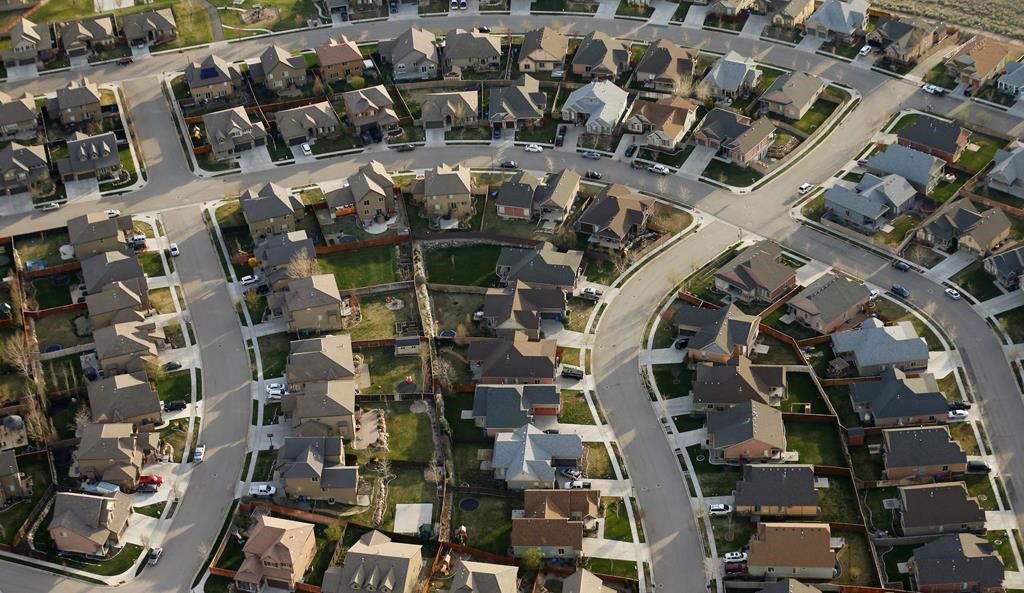All of the major parties laid out housing policies over the past week, and all of them have a particular degree of superficiality about them that is particularly troubling. The housing crisis in parts of this country is a result of a number of factors, but inattention from the Liberal government was not one of them, in spite of claims being made to score points. The markets where it is being felt most acutely, like the greater Toronto and greater Vancouver areas, have some particularly unique sets of circumstances around the supply of housing, which have metastasized and spread over their surrounding regions, but they have nevertheless had a distortionary effect on our entire economy.
We should establish a few of the reasons why the prices have skyrocketed over the past two years – much of which is simple supply and demand. The pandemic created a surge in demand single-family housing in suburban and outlying areas of major cities, because everyone decided that they needed a bigger house and a yard, or that the new normal of working from home meant they didn’t have to factor in commuting like they used to. This then got exacerbated by a combination of near-zero interest rates and increased household savings (because they couldn’t spend on things like travel), and with already insufficient supply on the market, it’s basic economics to understand why the prices would reflect the fact that you have far more demand than supply. While some foreign buyers and speculation does exist in this environment, it’s a very small percentage of the problem of supply.
The biggest problem of all that largely goes unmentioned is the fact that the vast majority of the bottlenecks to increasing the supply of housing – particularly in those key markets – are at the municipal level. The NIMBYism and resistance to densification slows down development while city councillors, eager for re-election, are reluctant to go against the voters in their wards, and even once projects get approved, the process for permits have been known to take up to a year in places like Vancouver, which means that the federal and provincial dollars to increase the supply of affordable housing are being constrained. Promising more dollars into this particular system is a bit of a fool’s errand because it doesn’t actually address where the bottleneck is happening.
To that end, the Liberals have suggested a $4 billion Housing Accelerator Fund that they would allocated to municipalities that streamline their processes and make sure that approvals and permitting happen faster. Among their suggestions for how this would work include a target of 100,000 new Middle Class™ homes by 2024-25, and that getting cities to enforce these timelines through use of “use it or lose it” bylaws that would force urban land to be made available for housing and not be kept vacant by speculators. It sounds like an idea to help combat the municipal-side of problems, but there have been suggestions that they might be better off trying to get the provinces to use legislation that would liberalize planning rules to make approvals easier.
By contrast, the NDP have a hand-wavey plan to have dedicated “fast-start funds” to streamline the application process, but I’m not sure that helping “communities get the expertise and assistance they need to get projects off the ground now, not years from now” is actually going to address the bureaucratic processes around approvals and permitting. The Conservatives acknowledge that action is needed from all levels of government – but leave it at that. Their “detailed plan” includes nothing on how they plan to persuade or incent provinces or municipalities to do their part in harmony with the federal government.
The Conservatives hope to use the (minimal) leverage of federal infrastructure dollars when it comes to housing to ensure that public transit infrastructure is built to where people are buying homes, and requiring municipalities getting these transit dollars to increase the density near the funded transit. While it makes a certain amount of sense to incent building near rapid transit lines and hubs (and municipalities would need some forward-thinking coherence to start putting in the gas and electrical infrastructure in at the same time as they build the mass transit lines), anyone who has taken a mere thirty seconds to think about building transit to where people are buying is that our habit of building winding, cul-de-sac-heavy suburbs makes transit unusable. It’s not something the federal government can really do anything about, but simply tying dollars to extending transit to these developments doesn’t solve any problems around housing or affordability – or transit ridership, really.
All three parties’ plans contain plenty of other incoherence – the Liberals propose a tax credit to build secondary suites for multi-generational families, but most municipalities ban such suites. Both the Liberals and NDP pledge to ban “renovictions,” when landlord-tenant legislation is provincial jurisdiction (and the Liberals absolutely should know better, but the inclusion seems to have simply been to match the NDP’s promise). All three parties have policies to help first-time home buyers which will simply pour gasoline on the fire that is housing unaffordability.
While it’s great that all of the parties recognize that supply is a big part of the problem and promise to build more – 50,000 units in ten years for the NDP, one million over three years for the Conservatives, and 1.4 million homes in four years to be built, repaired or preserved by the Liberals – they largely omit the bottleneck issues, or the fact that the labour to actually build that many houses in that period is going to be hard to come by – especially in the GVA and GTA. Trying to attract it from other parts of the country when there isn’t anywhere for them to live is going to be a major challenge that all parties shrug off, especially the NDP boasting that they will create “thousands of jobs,” apparently out of thin air.
Housing is a multi-faceted problem with a lot of moving parts, and not something the federal government can tackle on its own. By insisting that the Liberals didn’t do anything over the past six years (in spite of all evidence to the contrary) simply sets up false expectations. It’s great that the federal level has re-engaged on this file in a significant way, but none of the parties are being honest in fully addressing the problems, and are only setting themselves up for future failures. We need them to do better.







